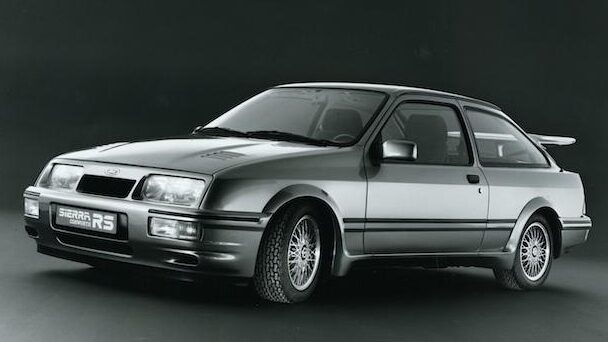Of course, vast numbers of new car models – of all types – have been launched since the Western Group of Motoring Writers was formed three decades ago.
Many vehicles I wrote about as new cars in the early 1980s (and previously) are now widely regarded as ‘classics’, although the definitions applied to this word can vary widely!
My working brief from Chairman Ian for these features (one each month through 2013) was to come up with “The 12 most significant future classics that have been launched in that time”… However, in my own personal selection of models, I might easily leave out some cars thought by others to be ‘more deserving’, and in any case judgement based on this precise definition will be viewed very differently by different individuals. The parameters for inclusion will also vary according to vehicle type (etc.). So, having given all this much thought, I’m taking the liberty of amending the title just a little, to “12 of the most significant future classics launched in the last 30 years”. (Let’s hope I get away with that…).
Having got that off my chest, I now have a little more scope for some fun in choosing models to include. Let’s start by being a bit controversial…
In October 1982 the much-loved, angular Cortina (Mark V by then) was finally ousted and in its place Ford introduced the boldly styled five door Sierra hatchback.
Initial reaction to its unconventional, rounded bodywork was mixed. Many traditionalists were outraged at the ‘awful jellymould’ shape of the newcomer, whereas other people were pleased to be driving something that looked totally new and different. Either way, as time went on the styling became sharper and buyers mellowed; the model became a firm favourite with fleets and families, as the Cortinas had done in the 1960s and 70s.
The newcomer still featured a longitudinal engine/gearbox configuration and rear wheel drive, but unlike the Cortina, incorporated independent rear suspension. From the start the Sierra was offered with a wide range of trim options. Engine choices included four cylinder petrol engines (1.3, 1.6, 1.8 and 2.0 litre units), or a 2.3 litre V6. A 2.3 litre diesel was available too. Saloon and estate versions were sold, in addition to the hatchbacks.
It was inevitable that Ford would offer sporting variants, and things became much more interesting in May 1983, with the arrival of the three door XR4i, powered by a fuel-injected version of the 2.8 litre V6 ‘Cologne’ engine. This model was effectively replaced two years later by the four wheel drive, five door XR4x4.
Hailed in the summer of 1986 (by me, anyway) as a classic in its own time was the three door RS Cosworth. Under its sloping bonnet was a fuel-injected two litre, 16 valve four cylinder power unit (derived from the Pinto motor), with a turbocharger and intercooler. It also featured an early engine management system…
Developed to succeed in ‘Group A’ motorsport, this model was the result of collaboration between Ford Motorsport, Ford Special Vehicle Engineering and Cosworth Engineering. Highlights of the running gear specification, compared with standard Sierras, included uprated driveshafts, a limited slip differential and Teves anti-lock brakes, plus stiffer suspension
Complete with bodywork modifications including a deep front airdam, sideskirts and cooling louvres in the bonnet, plus wide sports aluminium alloy wheels and a sporty, comprehensively-equipped interior, the car looked the part too.
Crucially, for the time it also provided blistering performance. With 204 bhp on tap acceleration was impressive (rest to 60 mph in 6.2 seconds) and the potential top speed was 145 mph.
When launched, the Cosworth was priced at £15,950, representing excellent value for a car combining supercar performance with everyday practicality
Faster still (and costing £4,000 more) was the 1987 homologation special Limited Edition RS500, built with the Touring Car Championship in mind. With engine modifications including a revised inlet manifold and a larger turbocharger, it produced an additional 20 bhp, cutting the nought to 60 mph time down to just 5.8 seconds, and boosting the top speed by 10 mph.
The ‘Sapphire’ RS Cosworth four door saloon made its debut in 1988, and from February 1990 this model gained permanent four wheel drive with an unequal torque split (34 per cent to the front; 66 per cent to the rear).

The Sierra gave way to the new front wheel drive Mondeo in the spring of 1993. Sporting versions – and especially Cosworths – are highly sought-after today, and the asking prices of excellent examples of even the basic Sierras are climbing too.
Who, in the heyday of these cars, would have thought that they would ever be seen as ‘desirable’ ? Having said that, when did you last see a Sierra on the road?
Images sourced thanks to Virtual Motorpix © Kim Henson

